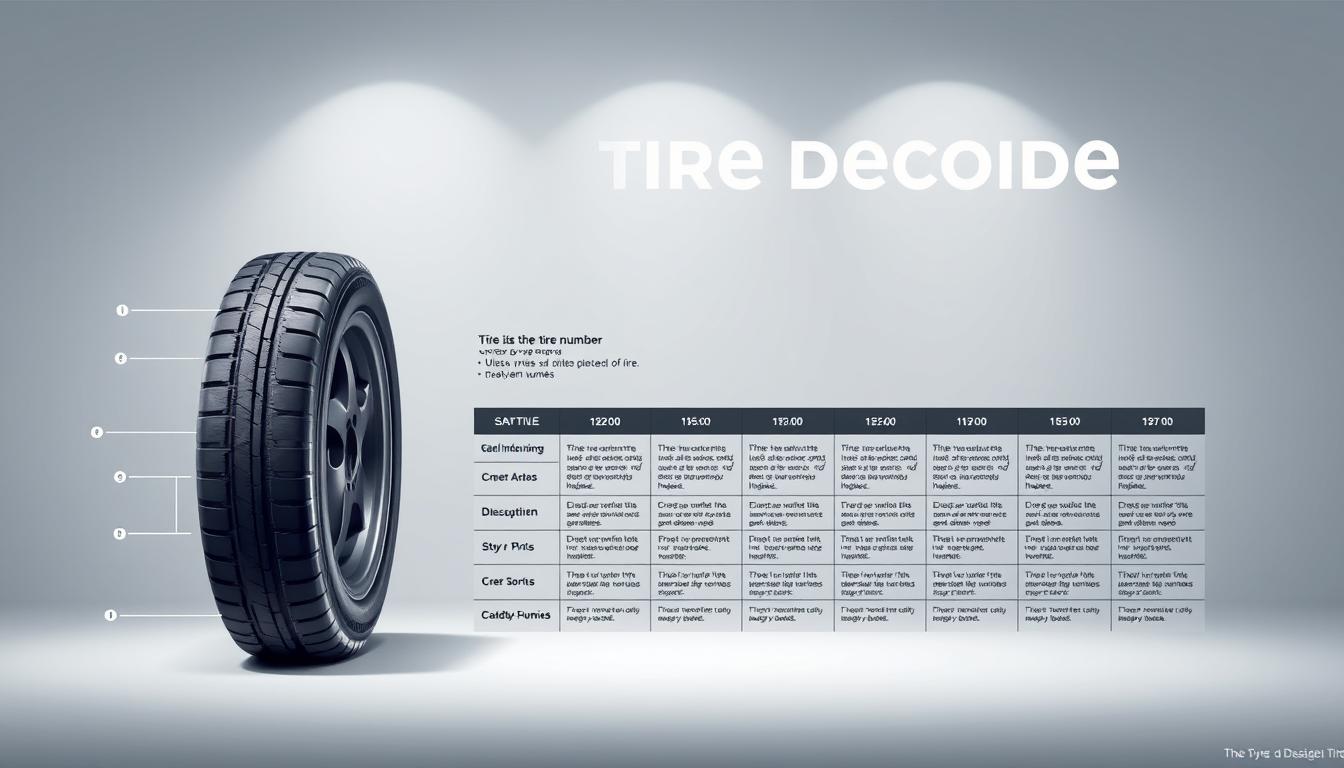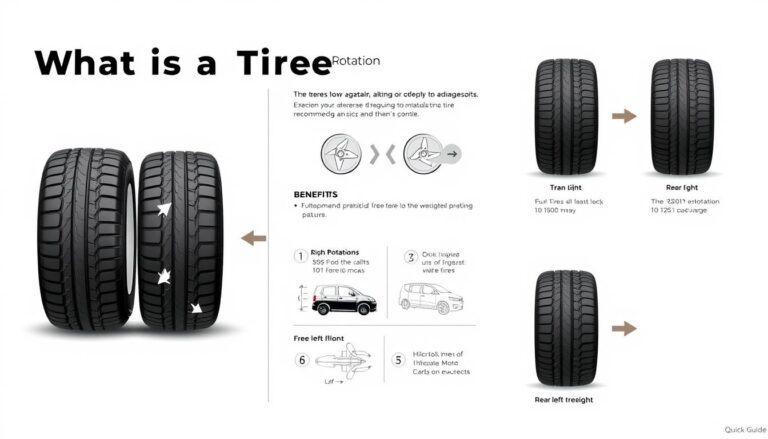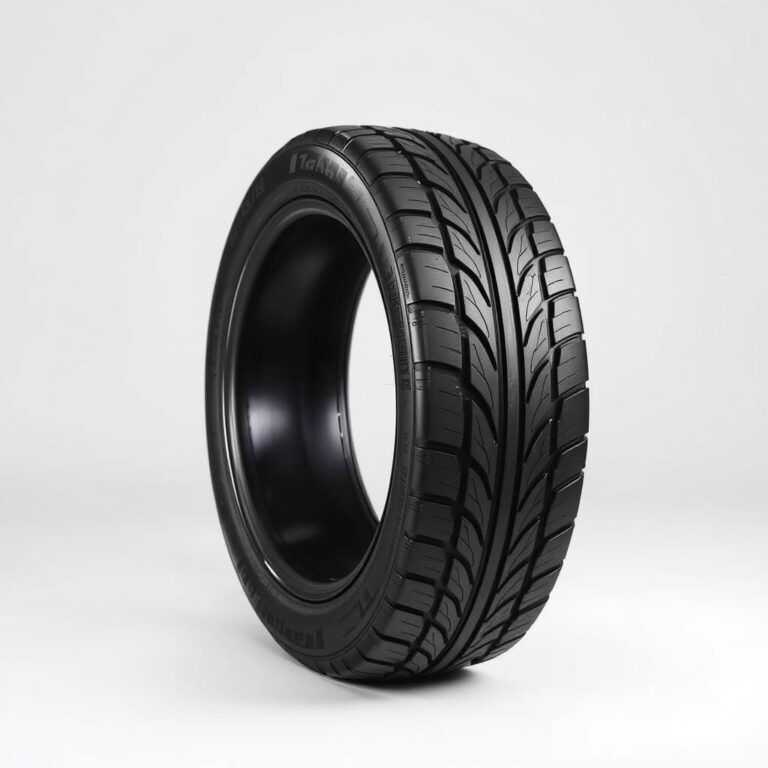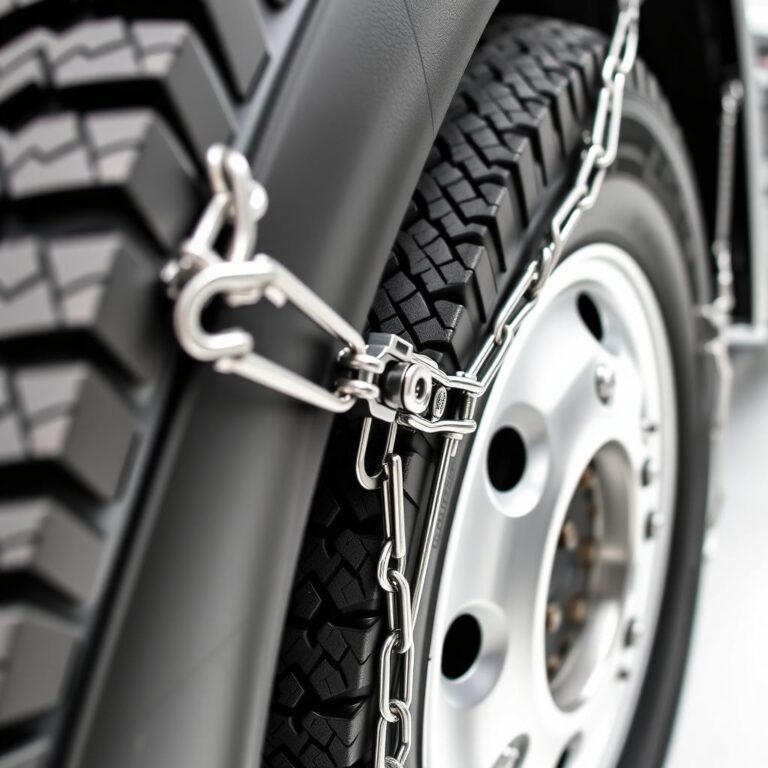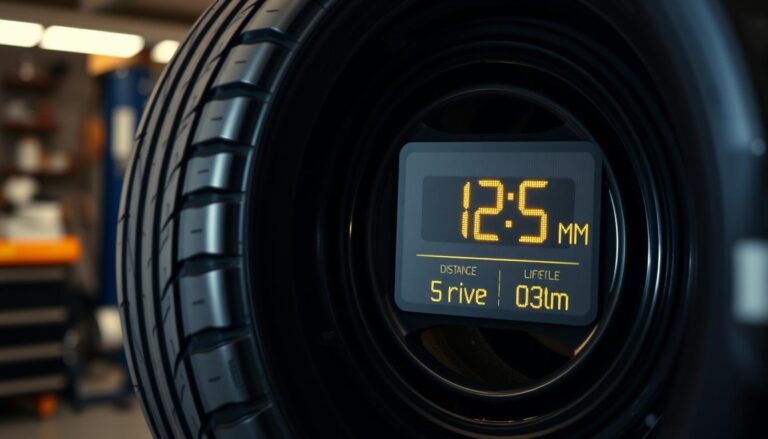Decode Tire Numbers: What Do They Mean?
Every tire has a story, and those numbers are more than just random digits. They are a key to your vehicle’s safety and performance. Knowing what these numbers mean can change how you take care of your vehicle and choose tires.
Tire number coding is like a secret language. It shows important details about your vehicle’s connection to the road. These markings tell you about size, load capacity, speed rating, and more. They all affect your driving experience.
Many drivers ignore these numbers, but they mean a lot. Each number and letter has a special meaning. They help keep you safe, improve your vehicle’s performance, and guide your buying choices.
Being able to read these numbers like a pro is empowering. You’ll know how to pick the right tires and understand their limits. This skill is vital for anyone who drives, whether daily or for fun.
This guide will make tire markings easy to understand. You’ll learn about width, aspect ratio, load ratings, and speed symbols. Soon, you’ll speak tire language like a pro.
Understanding the Basics of Tire Markings
Learning to decode tire numbers is key for car owners. Tire markings share vital info on your car’s performance, safety, and upkeep needs. Knowing about tire markings helps drivers make smart choices about their car’s most important part.
Many car owners don’t realize how important tire numbers are. These codes hold important info on tire specs, performance, and safety standards.
Common Tire Number Locations
Tire numbers are found in three main spots:
- Sidewall of the tire
- Driver’s side door jamb
- Vehicle registration documents
The Importance of Reading Tire Numbers
Reading tire numbers is more than just curiosity. It ensures your car runs right, saves fuel, and stays safe. Each number and letter tells you about:
- Tire width
- Aspect ratio
- Construction type
- Wheel diameter
Safety Implications of Tire Markings
Getting tire markings wrong can be very dangerous. The wrong tires can make your car harder to handle, longer to stop, and might even fail unexpectedly. Mechanics and tire experts say it’s important to check tire markings often to keep your car safe.
By learning to read tire numbers, drivers can make better choices about tire care, replacement, and car performance.
What Do the Numbers on a Tire Mean
Understanding tire numbers is key for safety and performance. When you look at a tire, you’ll see numbers and letters. These tell you about tire size and specs.
- Tire Width: The first three digits show the tire’s width in millimeters
- Aspect Ratio: The two-digit number after width shows the tire’s height compared to its width
- Construction Type: A letter (like R) shows the tire’s internal construction
- Wheel Diameter: The last two-digit number shows the wheel rim size in inches
Let’s use an example to show what tire size meaning is. In P215/65R15, each part tells you something about the tire.
| Tire Marking Segment | Meaning | Example Value |
|---|---|---|
| P | Tire Type | Passenger Vehicle |
| 215 | Width (mm) | 215 millimeters |
| 65 | Aspect Ratio | 65% of tire width |
| R | Construction | Radial |
| 15 | Wheel Diameter | 15 inches |
Knowing how to read these numbers helps drivers pick the right tires. This ensures the best performance and safety on the road.
Breaking Down Tire Width and Aspect Ratio
Knowing about tire specs is key for car owners wanting the best performance and safety. Tire width and aspect ratio are vital. They affect how your car handles and your driving experience.
Tire width is the measurement from one sidewall to the other, in millimeters. It’s a big part of understanding tire sizes and how well your car performs.
Understanding Tire Width Measurements
Looking at tire specs, the width is the first number. For example, in a tire marked 225/50R17:
- 225 is the tire width in millimeters
- Wider tires give better grip and handling
- Narrower tires can help with fuel efficiency
Calculating Aspect Ratio for Your Vehicle
The aspect ratio shows the tire’s height compared to its width, as a percentage. In our example (225/50R17), 50 is the aspect ratio. It means the tire’s height is 50% of its width.
| Aspect Ratio | Vehicle Performance Impact |
|---|---|
| Lower Ratio (40-50%) | Better handling, sportier ride |
| Higher Ratio (60-70%) | More comfortable ride, better shock absorption |
Impact on Vehicle Performance
Choosing the right tire dimensions is about finding the right balance. It depends on your driving needs, road conditions, car type, and how you drive. The ideal tire width and aspect ratio vary based on these factors.
- Sports cars do well with lower aspect ratios
- Comfort-focused vehicles need higher aspect ratios
- SUVs and trucks have their own considerations
Decoding Tire Construction Codes
Understanding the tire numbering system means learning about construction codes. These codes show how tires are made and their performance.
Tires are built in two main ways:
- Radial Tires: Most modern vehicles use radial construction
- Bias-Ply Tires: Older design with less common applications
The construction code is shown by a letter on the tire’s sidewall. You’ll often see:
| Construction Code | Meaning | Common Usage |
|---|---|---|
| R | Radial Construction | Passenger vehicles, modern cars |
| D | Diagonal/Bias-Ply Construction | Specialized vehicles, trailers |
Radial tires are more common because they perform better. They save fuel, last longer, and handle better than bias-ply tires. Knowing about tire construction helps you understand your vehicle’s tires better.
When looking at tire construction codes, think about your driving needs. The right tire construction can make your vehicle safer and perform better.
Wheel Diameter and Load Rating Explained
Knowing about tire specs is key for safety and performance. Wheel diameter and load rating are important. They tell you how your tires will do in different situations.
Wheel diameter shows the size of the wheel rim. It’s vital for picking the right tires for your car. The right diameter ensures a good fit and driving experience.
Maximum Load Capacity Guidelines
Load rating shows the max weight a tire can handle. Each tire has a load index number for its weight capacity. Here are some important points:
- Load index ranges from 70 to 126
- Higher numbers mean the tire can carry more weight
- Make sure the load rating matches your vehicle’s needs
Matching Wheel Size to Vehicle Requirements
Choosing the right wheel size is more than just measuring. You need to think about:
- What the car maker suggests
- The driving conditions and terrain
- What you expect from your car’s performance
Pro tip: Check your car’s manual or talk to a tire expert for the best fit and compatibility.
Speed Rating Symbols and Their Significance
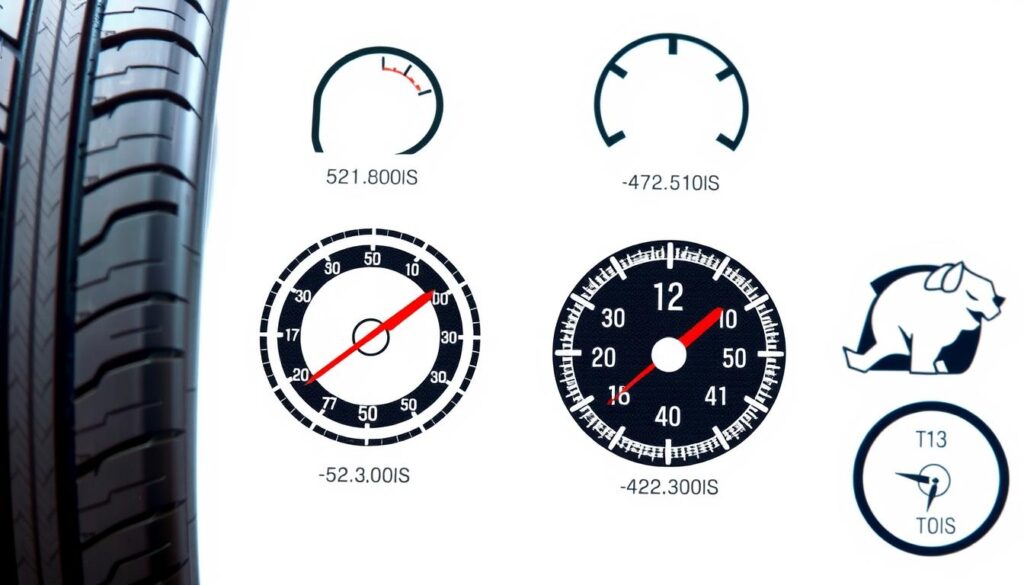
Understanding tire numbers means knowing about speed rating symbols. These symbols are key for keeping your vehicle safe and running well. They show the top speed a tire can handle under certain conditions.
Speed ratings go from L to Y. Each letter stands for a certain top speed. Drivers need to look at these symbols to make sure their vehicle is running right and safely.
- L rating: Up to 75 mph (120 km/h)
- M rating: Up to 81 mph (130 km/h)
- N rating: Up to 87 mph (140 km/h)
- P rating: Up to 93 mph (150 km/h)
- Q rating: Up to 99 mph (160 km/h)
- R rating: Up to 106 mph (170 km/h)
- S rating: Up to 112 mph (180 km/h)
- T rating: Up to 118 mph (190 km/h)
Tire number coding tells you a lot about a tire’s abilities. The speed rating affects how long the tire lasts, how it handles, and how safe your vehicle is. It’s important to pick a tire with the right speed rating for your driving.
Drivers who need high speeds should look at V (up to 149 mph), W (up to 168 mph), and Y (up to 186 mph) ratings. These ensure you’re safe and performing well at high speeds.
Going over a tire’s speed rating can cause it to fail badly. This could lead to serious accidents. Always check what your vehicle’s maker suggests for tires.
Manufacturing Date Codes: Reading the Fine Print
It’s important to know the age and safety of your tires. The manufacturing date code tells you when a tire was made. This info affects how well it works and how reliable it is.
Every tire has a special code that shows its history. This guide helps you understand the details in these numbers.
Determining Tire Age
The age of a tire is shown by a four-digit code on the sidewall. These numbers mean:
- First two digits: Week of manufacture
- Last two digits: Year of manufacture
For example, 2319 means the 23rd week of 2019.
When to Replace Based on Date Codes
Experts say to replace tires that are:
- More than 6 years old, no matter the tread
- Showing signs of aging like cracking or dry rot
- Exposed to extreme weather
| Tire Age | Recommended Action |
|---|---|
| 0-3 years | Regular maintenance |
| 3-6 years | Annual professional inspection |
| 6+ years | Consider replacement |
Knowing about manufacturing date codes is key to tire safety and car care. Always talk to a professional tire tech for advice on your tires.
Optional Tire Markings and Special Indicators
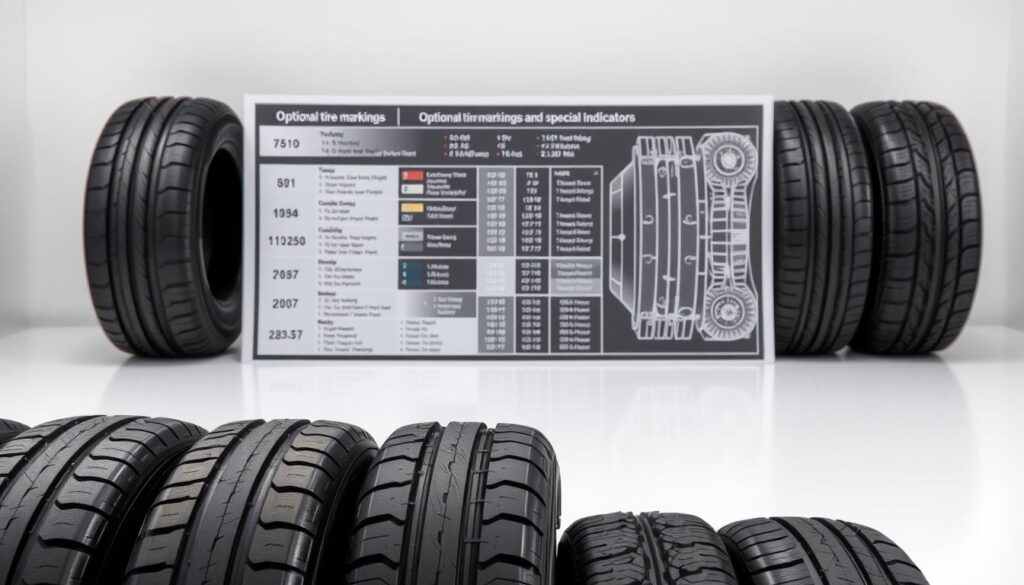
Tire specifications are more than just size. They have many optional markings that show important details. These details help us understand how the tire works and performs.
Drivers can find special indicators on tires. These tell us about the tire’s design and how it works. They help us pick the right tire for different driving situations.
- Run-Flat Technology Indicators: Symbols that show tires can keep going after a puncture
- Seasonal Use Markers: Codes for all-season, winter, or special driving conditions
- Eco-Friendly Designations: Markers for environmentally friendly tire making
Treadwear indicators are key for tire care. They show when a tire needs to be replaced. This helps drivers know when it’s time for a new one.
Some tires have advanced features. These include:
- Alignment indicators for correct wheel placement
- Performance rating symbols
- Load capacity markers
Looking at these optional markings helps drivers choose the best tire. It ensures their vehicle runs well and safely.
Department of Transportation (DOT) Codes
The Department of Transportation (DOT) codes are key in the tire numbering system. They give vital info about tire making and safety checks. Knowing how to read these codes helps people choose safer tires for their cars.
DOT codes are found on the tire’s sidewall. They share important facts about the tire’s making and specs. These codes are not random. They are a detailed tracking system that ensures tires are safe and of good quality.
Tracking Manufacturing Origins
Each DOT code has specific info about the tire’s making:
- The first two characters show the plant code
- The next two digits are the tire size
- The last four digits are the production week and year
For instance, a DOT code might be ABCD 2319. Here, 23 is the week and 19 is the year it was made.
Safety Certification Standards
The DOT code is more than a tracking tool. It’s a key safety check that makes sure tires meet strict federal rules. Tires must pass tough tests and quality checks to get DOT approval.
People can use these codes to:
- Check if a tire is real
- Find out when it was made
- Look for safety recalls
- Determine if a tire needs to be replaced
By learning about the tire numbering system and how to read these codes, car owners can make better choices for their tires.
Seasonal and Special Use Designations
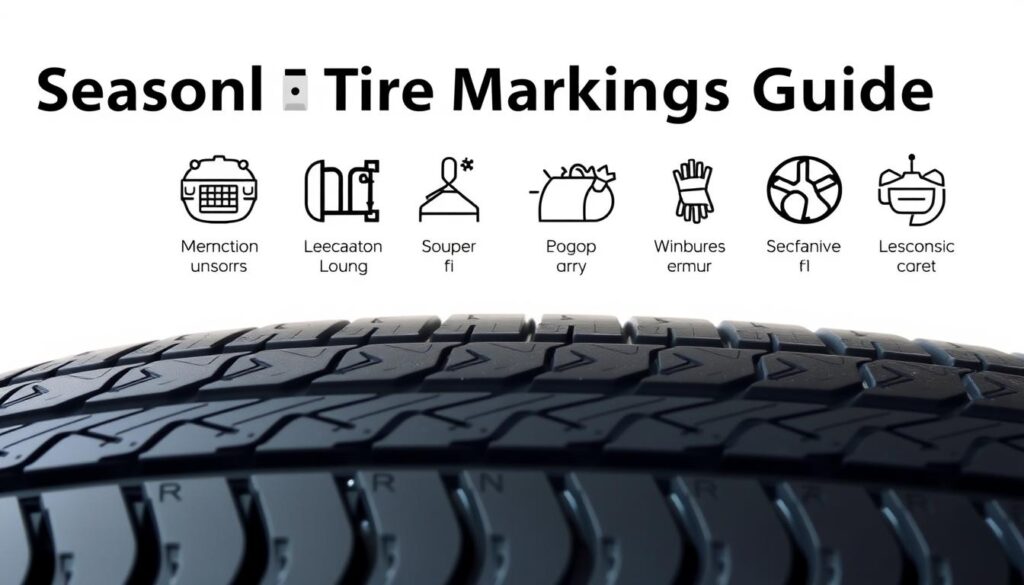
Knowing about tire sizes is more than just numbers. Different weather needs special tires for safety and better driving. The guide to tire markings shows important seasonal and special use signs. These help drivers pick the best tires for their needs.
Tire makers use special symbols for seasonal and special tires. These symbols tell us about a tire’s use and how it performs.
- All-Season Tires: Marked with “M+S” (Mud and Snow), designed for versatile performance in various weather conditions
- Winter Tires: Identified by a snowflake symbol, optimized for cold temperatures and snow-covered roads
- Summer Tires: Engineered for warm weather and dry road surfaces
- Off-Road Tires: Feature aggressive tread patterns for challenging terrain
Drivers need to check tire markings for the best vehicle performance and safety. This is true for different driving places.
| Tire Type | Seasonal Designation | Key Performance Characteristics |
|---|---|---|
| All-Season | M+S | Balanced performance in multiple conditions |
| Winter | Snowflake Symbol | Superior traction in cold and snowy conditions |
| Summer | No Special Symbol | Optimal dry and warm weather performance |
| Off-Road | Aggressive Tread Pattern | Enhanced grip on rough terrain |
Choosing the right tire means knowing these special designations. Drivers should think about their local weather, usual driving spots, and what their vehicle needs. This helps pick the best tires.
Performance Ratings and Treadwear Indicators
Tire specifications explained are more than just numbers. They show how tires perform in different situations. The Uniform Tire Quality Grading (UTQG) system helps drivers check tire quality and how long they might last.
Performance ratings are key when looking at tire numbers. They help drivers choose the right tires for their needs and driving habits.
Understanding Traction Grades
Traction grades show how well tires stop on wet roads. There are four main levels:
- AA: Highest traction performance
- A: Excellent wet stopping capabilities
- B: Good wet surface performance
- C: Minimal wet traction
Temperature Ratings Explained
Temperature ratings tell us how well tires handle heat. They range from A to C, with A being the best at handling heat.
| Temperature Grade | Heat Resistance | Performance Indication |
|---|---|---|
| A | Highest | Excellent heat dissipation |
| B | Moderate | Good heat management |
| C | Lowest | Basic heat resistance |
Drivers should think about these ratings when picking tires. It helps ensure safety and performance for their driving needs.
Modern Tire Technology and Smart Tire Codes

The world of tire technology is changing fast. It’s now about more than just tire number coding. Advanced sensors and smart systems are making tires smarter and more connected.
Today’s tires have new tech that goes beyond old markings. Smart tire systems use sensors to track tire performance, pressure, and wear in real-time.
- Pressure monitoring sensors
- Temperature tracking capabilities
- Wear detection mechanisms
- Predictive maintenance technologies
New ideas are changing tire design. Companies are working on airless tires and eco-friendly materials. These could change how we mark tires in the future.
| Technology | Key Features | Potential Impact |
|---|---|---|
| Embedded Sensors | Real-time performance tracking | Enhanced vehicle safety |
| Airless Tire Design | Puncture-resistant structure | Reduced maintenance needs |
| Sustainable Materials | Eco-friendly composition | Lower environmental footprint |
Drivers will soon see more advanced tire coding. It will give detailed info on tire performance, age, and when it needs maintenance. This tech is ushering in a smarter era of tire management.
Conclusion
Learning about tire sizes is key to your vehicle’s safety and performance. We’ve looked into the world of tire markings. Each number and symbol tells us important info about your car’s contact with the road.
It’s not just about the numbers. Each code speaks a language of vehicle engineering. It talks about load capacity, speed, and more. Knowing these codes helps you choose the right tires and keep them in good shape.
Tire markings are like a safety guide for drivers. Checking them regularly can prevent accidents and save fuel. By learning about tire sizes, you become a more aware and responsible car owner.
Tire technology keeps getting better. Keeping up with new standards and technologies is important. It helps you make better choices for your car’s safety and performance. Your effort to understand these details leads to safer and more enjoyable driving.
